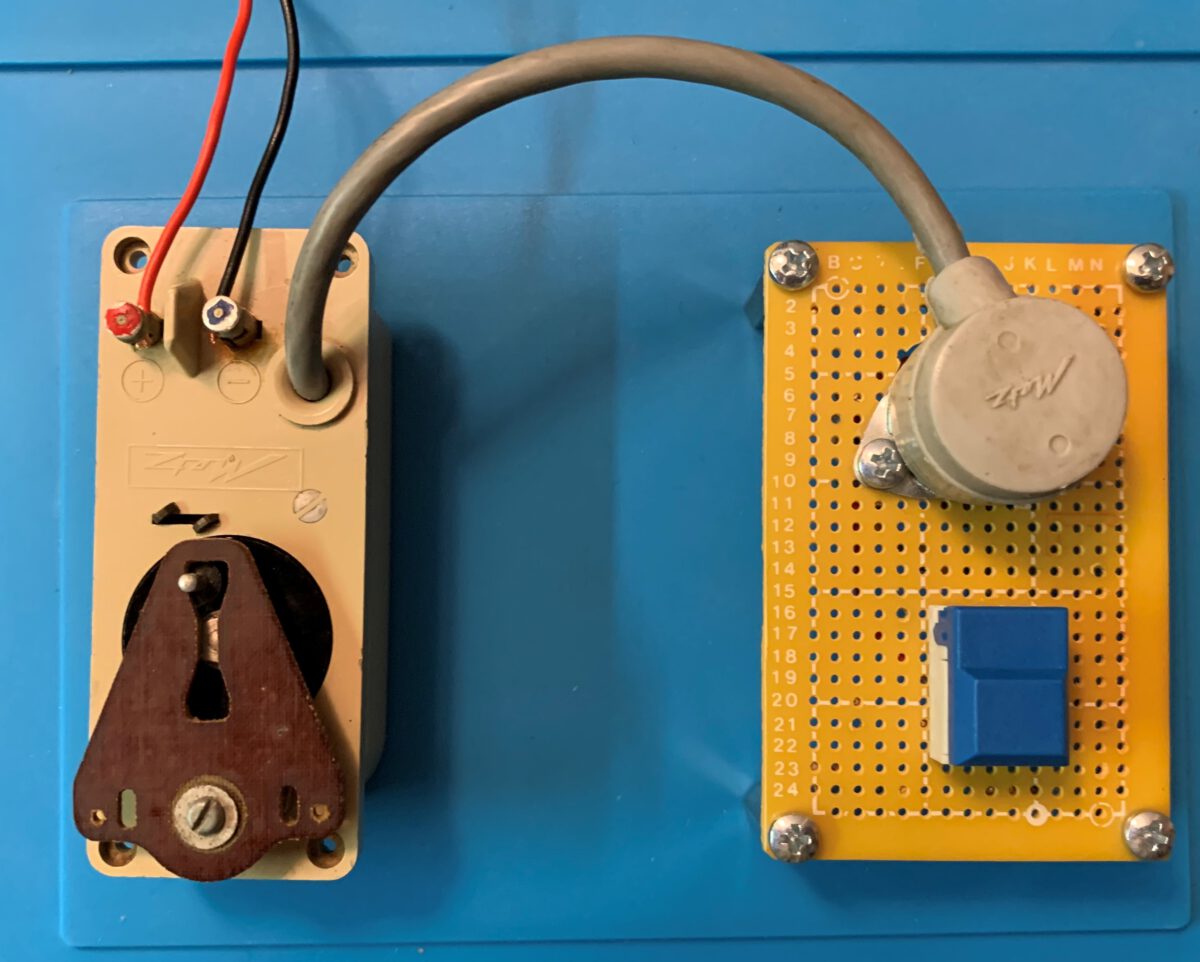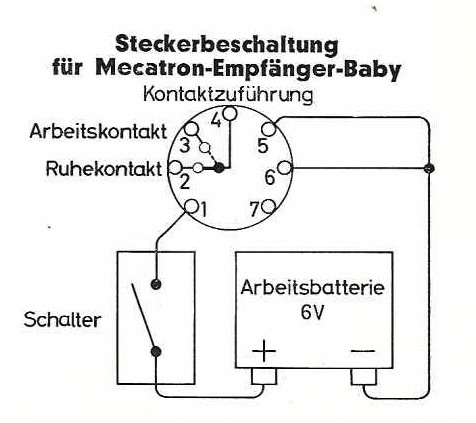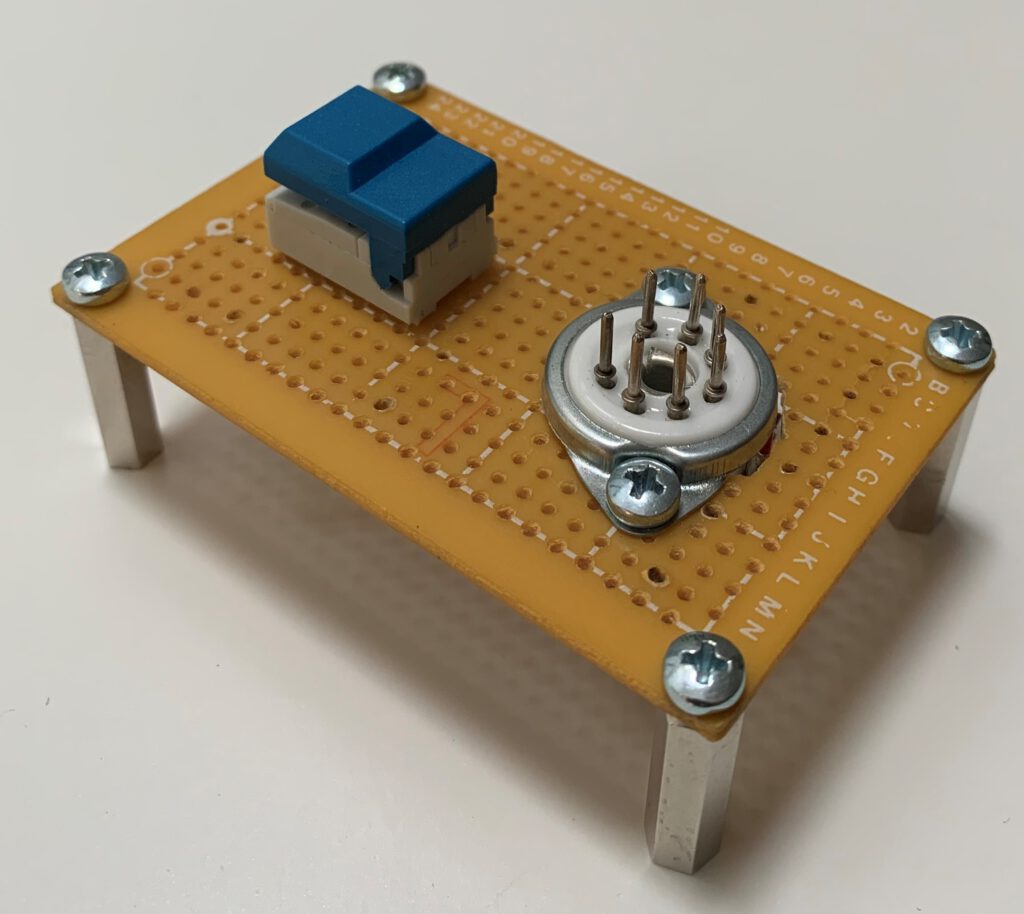I am currently working on the restoration of a Metz MECATRON ‘BABY’ radio remote control. For testing and commissioning the rowing machine, I didn’t want to switch on the entire remote control every time, so I built a simple tester.
This tester reproduces the output of the receiver 191/S – a relay with a switching contact – with a corresponding button. Thus, the function of the rowing machine, which depends on the control panel used, can then be tested.
In my case, the control panel 1 is inserted; the following switch rhythm is realized according to the user manual:
- Transmitter key pressed: Rudder left as long as button remains pressed
- Press the transmitter button briefly (approx. 0.4 seconds), release briefly (approx. 0.4 seconds) and hold down: Rudder on the right, as long as the button is pressed the second time.
- After letting go of the transmitter button, the rudder always goes neutral by itself.
In the setup presented here, of course, the transmitter button corresponds to the button.
The tester can be easily mounted on a laboratory circuit board and the wiring effort is minimal. As can be seen in the picture, I realized the required 7-pin plug for connection with the rowing machine by inserting soldering nails into a 7-pin tube socket.


